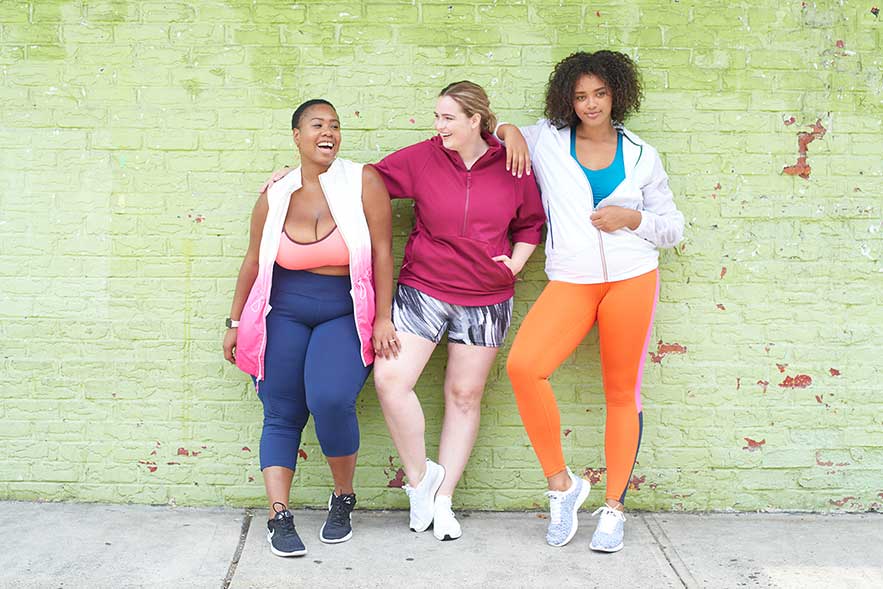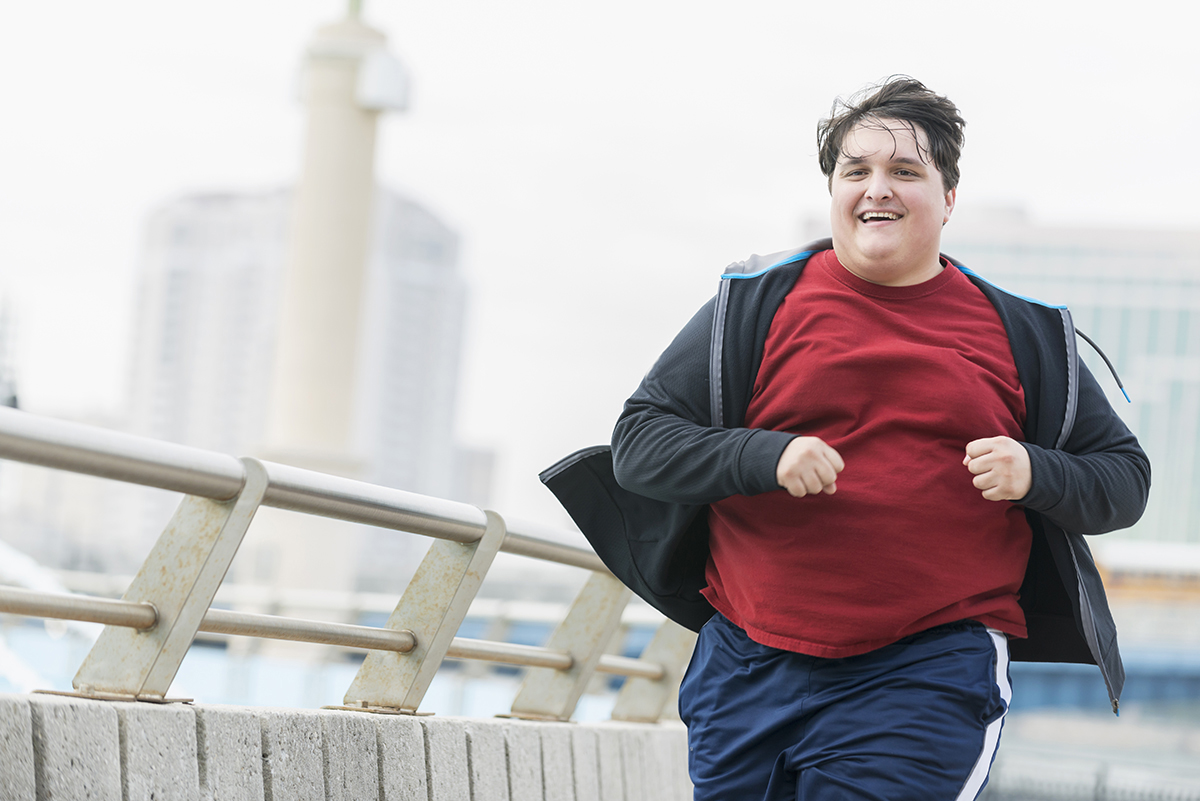[ad_1]
ACE’s mission is to “Get People Moving,” and, as Jacque Crockford, DHSc, ACE’s Senior Product Manager says, “that is all people, from all backgrounds, all stations in life, all education levels, all sizes, from anywhere and everywhere, all ability levels.” Unfortunately, the sad truth is that the fitness industry has long felt intimidating, or even hostile, to individuals living in larger bodies.
For many, the lack of body-size diversity in traditional fitness—from gym marketing materials to workout classes and beyond—has led to many people feeling unwelcome or uncomfortable in fitness spaces. And isn’t that the last thing we as an industry should want to do—to scare people away from pursuing the health and wellness we work so hard to promote?
To gain a better understanding of the state of the fitness industry when it comes to weight stigma and size inclusivity, ACE recently co-hosted a webinar with SELF magazine. The discussion, which was facilitated by Dr. Crockford and the Editor in Chief of SELF, Leta Shy, explored best practices and provided strategies that health coaches and exercise professionals can implement to better serve their clients and create a more size-inclusive environment. The panel of experts for this webinar was as follows:
- Tasha Edwards, MS: ACE Certified Group Fitness Instructor and founder of Hip Healthy Chick
- Louise Green: ACE Certified Group Fitness Instructor, author of Big Fit Girl and Fitness for Everyone, and Founder of the Size-Inclusive Training Academy
- Christy Greenleaf, Ph.D.: Professor of Kinesiology at the University of Wisconsin Milwaukee, with a research focus on psychosocial aspects of weight/weight bias, physical activity, body image and disordered eating
- Chrissy King: Writer, speaker, educator and strength coach, and creator of The Body Liberation Project
Recognizing the Problem
“When we’re talking about weight bias,” explains King, “we’re really talking about negative attitudes, judgments, stereotypes, oppression, and even discrimination aimed at people simply because of the size of their bodies.”
Like any type of prejudice, these manifestations of weight bias can be overt or very subtle, and they happen across all industries and elements of society. And, it’s essential to recognize that the goal of addressing weight bias is about examining not only what is happening in the fitness industry at large, but also our own beliefs and behaviors.
Take some time to be reflective about your own assumptions and behaviors and how they might be impacting your current clients or driving away others who might otherwise use your services.
Identifying and acknowledging your own biases—perhaps assuming a larger client is coming to you with a weight-loss goal or has type 2 diabetes, for example—is vital to working effectively with all of your clients. And yes, magazine covers featuring chiseled abs and flat stomachs might negatively impact those individuals living in larger bodies, but so might those before-and-after pictures posted on social media with the best of intentions.
Some professionals might think, ‘I don’t do that,’” says Edwards, “but making modifications that haven’t been requested or decided that you need to serve a person a certain way before you’ve met them or know anything about their medical history” is a manifestation of weight bias. The same goes for making assumptions about what a person’s goals are or that they are new to physical activity or lack nutritional knowledge.
As Green explains, most people in larger bodies have extensive nutritional and exercise knowledge, as they have likely been cycling in and out of the diet/exercise world for many years. Importantly, these types of biases, which health coaches and exercise professionals may not even realize they are perpetuating, are persistent and damaging. “To the people who it’s happening to on a daily basis, it’s very tiring,” says Green.
Dr. Greenleaf expands upon the exhaustion felt in the face of weight stigma by turning to the research: “Commonly, we see associations with negative psychological consequences, including anxiety, depression, poor body image, things like that…. Physically, we see elevated cortisol levels because of chronic exposure to stress-related to experiencing weight-related stigma, and that has physiological consequences that harm a person’s health. And then behaviorally, we see that individuals who experience weight-related stigma and bias commonly report avoiding physical activity and engaging in binge eating as common coping mechanisms.”
Clearly, these outcomes run counter to the ACE’s core mission, so addressing weight bias in the fitness industry is a vital element of achieving that mission to Get People Moving.
Addressing the Issue
In the second section of the webinar, the panelists discussed next steps and best practices that can move the industry forward to become more inclusive.
- Be mindful about terminology: This is more complex than it sounds. As Dr. Greenleaf points out, even researchers in this area can’t agree on what terminology to use when talking to people about weight or body size. “A good strategy,” she says, “may be to simply ask people who you’re working with what words they feel comfortable using and if there are any terms they’d like to avoid.”
All of the panelists agreed with this approach, and also suggested avoiding the terms “obese” and “overweight” when talking with clients. It’s also okay to not have the terms at all, says Edwards, explaining that she often finds that there is no need to discuss a client’s body in a way that necessitates the use of that kind of terminology. “If a person identifies themselves” in a certain way, she continues, “then honor that, and honor the words they choose, whether you agree with them or not.”
- Avoid “shame moments”: This term, used by Edwards in the webinar, refers to moments such as those when a client is uncomfortable in a particular machine, has trouble getting up from the floor or cannot effectively navigate through a space with tightly packed equipment. Use your intuition to anticipate and avoid those damaging moments by being prepared with modifications or alternate programming. And, as Green suggests, think about questions like, “How can this gym really accommodate all bodies, regardless of what those bodies look like?”
- Avoid weight-loss competitions and weight-focused goal setting: This point was revisited several times by the panelists, as they clearly believe that hosting weight-loss challenges is a troubling and damaging practice. Green runs what she calls a “weight-neutral” business, choosing to instead focus on the athleticism and fitness aspect of her programming.
Edwards says she “follows the client,” stating that there are legitimate reasons to want to lose weight, citing pain reduction and health concerns. Finally, King tries to focus on how her clients want to feel in their bodies—energized and nourished.
- Be the change you want to see: When it came to positive changes that fitness professionals and facility owners/managers can make, the panelist offered some concrete suggestions. These included Dr. Greenleaf’s suggestion of “hiring professionals of various body shapes and sizes so that people see folks who are competent and skilled and knowledgeable across the weight and body-size spectrum.”
In addition, many facilities sell apparel as part of their marketing efforts but don’t always offer that apparel in a wide range of sizes and styles. Having larger sizes lets people know that they are part of the community. As King says, what people want to feel is “‘I’m wanted here and this space was created with me in mind.’ Inclusivity is about fostering that sense of community.”
Looking Toward Tomorrow
So, how do we as an industry move forward in a more inclusive way?
King, Green and Edwards all spoke about how to present as a size-inclusive professional and offered some great strategies:
- Make sure you are continuing this conversation beyond today and recognize that unlearning your biases is a lifelong journey.
- Look at the way you present your business on social media or on your website. Be sure to present the diversity, in terms of age, body size, ethnicity, ability, etc., that you want to see in the industry and among your clientele.
- Examine the culture of your facility. What do the employees look like, from the trainers to the front desk staff? If you don’t see the right culture and inclusivity, create it.
When asked about how she feels about where the industry is headed, Dr. Greenleaf expresses great optimism, as her current students are very receptive to these ideas. The industry will evolve, she explains, as more people speak up and advocate for a different way, a different approach, a different type of health promotion that is weight neutral.
Edwards shares that optimism, explaining that, after many years of working in the industry and seeing people exercising in largely exclusive, rather than inclusive, spaces, she feels that “we are finally at the point where people are getting it… [and] are willing to listen and work and continually be the change. It’s extremely gratifying and it’s an exciting time.”
Recording of the live webinar, A Space For Every Body: Addressing Weight Bias in the Fitness Industry, is now available for purchase to earn 0.1 CEC.

[ad_2]
Source link



